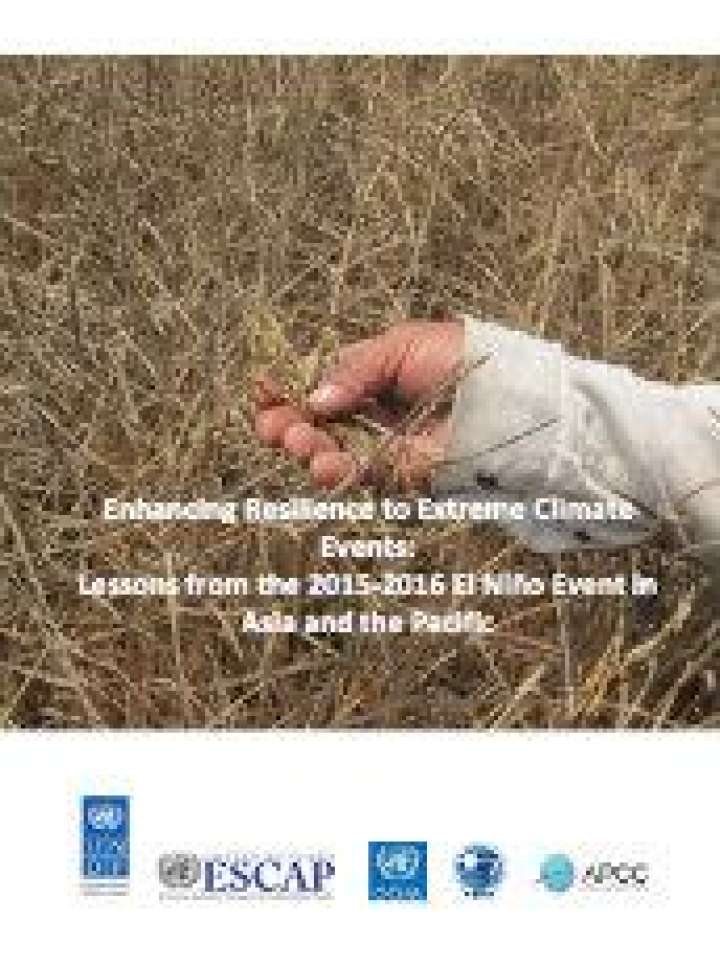Enhancing resilience to extreme climate events: Lessons from the 2015-2016 El Niño event in Asia and the Pacific
This report summarizes the lessons learnt from the 2015-2016 El Niño event and represents a one UN approach to put these lessons into practice to reduce the impacts of future extreme climate events, and to help enhance the resilience of people across the Asia-Pacific Region. The report highlights key achievements in science and technology for understanding and addressing El Niño related risks through climate modelling, vulnerability assessment, and disaster impact modelling. It also describes remaining gaps and challenges, and sets priorities for early action.
The 2015/2016 El Niño episode severely affected more than 60 million people around the world. In Asia and the Pacific, the event destroyed crops, killed livestock, dried up water-sources in some areas, caused a range of hydro-meteorological disasters such as flooding, tropical cyclone, drought and heat waves , led to malnutrition and food insecurity, increased disease outbreaks, and drove migration to other areas. Under the Regional Cooperation Mechanism and the Thematic Working Group on disaster risk reduction and resilience (DR3), the United Nations worked together to provide a coherent and coordinated support to member Countries.
Explore further
